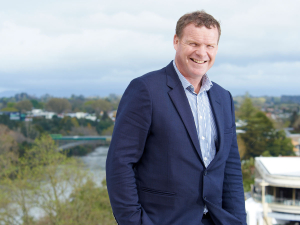Southland dairy farmers are urged to take it slow and steady when transitioning dairy cows onto fodder beet crops this season.
DairyNZ's regional leader for Southland, Richard Kyte, says cows must be very slowly introduced to fodder beet by gradually decreasing pasture/silage allocation and increasing the crop over 14-21 days.
"Pay attention to every detail all the way through the transition process. We can see issues after the first eight to 10 days, when people think they are through the process," says Kyte.
Even for cows eating fodder beet during late lactation, careful transition up to their winter feed allocation is required.
"We've had cases recently of acidosis in cows, related to fodder beet. Acidosis can cause rumen damage or death and will reduce a cow's food consumption.
"People must be vigilant; if you think cows aren't looking well, call a vet to check them out. The feed regime can then be adjusted to keep cows healthy."
Too much of the high sugar crop in a cow's daily feed intake or not having sufficient time to adapt to fodder beet as part of the winter diet can lead to lactic acid production in the cow's rumen, causing acidosis.
Farmers need to look for cows that seperate themselves from the mob, are not eating, are dehydrated, scouring, bloating, have milk fever-like symptoms, are down or die suddenly; then they should contact their vet immediately.
DairyNZ senior scientist Dawn Dalley says cows vary in how quickly they adapt to a new feed and the amount they can eat.
"We recommend farmers start mature cows with 1-2kgDM fodder beet/cow/day and only increase by 1kgDM every second day to the required allocation," says Dalley.
"During transition do not increase the allocation if all cows are not eating beet or if bulbs are being left on previous days' breaks."
Heifers and rising yearlings should be started on 1kgDM fodder beet/cow/day and only increase by 0.5kgDM every second or third day, once all animals are eating.
Dalley says cows should also be offered silage, hay or straw at least three hours before feeding fodder beet, to slow their crop intake.
"It's also valuable to accurately measure the crop yield, which includes knowing the percentage of dry matter of the crop being offered, and remembering it can vary between paddocks."
Having good electricity on fences and a very close second fence in case of breakout is also vital.
"Check your cows frequently; individual cows transition differently, so even with well-planned transitioning acidosis can occur."
More transition and feeding information is available at dairynz.co.nz/fodderbeet.
Farmers can also seek further advice from other farmers who've used fodder beet through Dairy Connect; visit dairynz.co.nz/dairy-connect.
BOX
Careful transitioning onto fodder beet
· Introduce cows to fodder beet by gradually decreasing pasture/silage and increasing the crop over 14-21 days
· Start mature cows on 1-2kgDM fodder beet/cow/day and only increase by 1kgDM every second day to the required allocation
· Heifers and rising yearlings should start on 1kgDM fodder beet/cow/day and only increase by 0.5kgDM every second or third day, once all animals are eating
· During transition do not increase allocation if all cows are not eating beet or if bulbs are being left on previous days' breaks
· Offer silage, hay or straw at least three hours before feeding fodder beet
· Measure the crop yield, which includes knowing the percentage of DM of the crop being offered.
· Be vigilant: if you think cows aren't looking well, call a vet to check them.


















